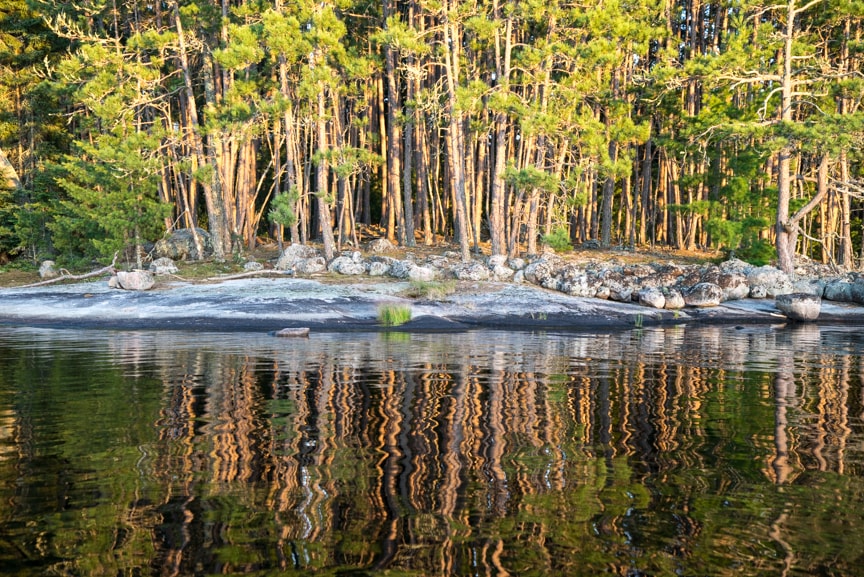
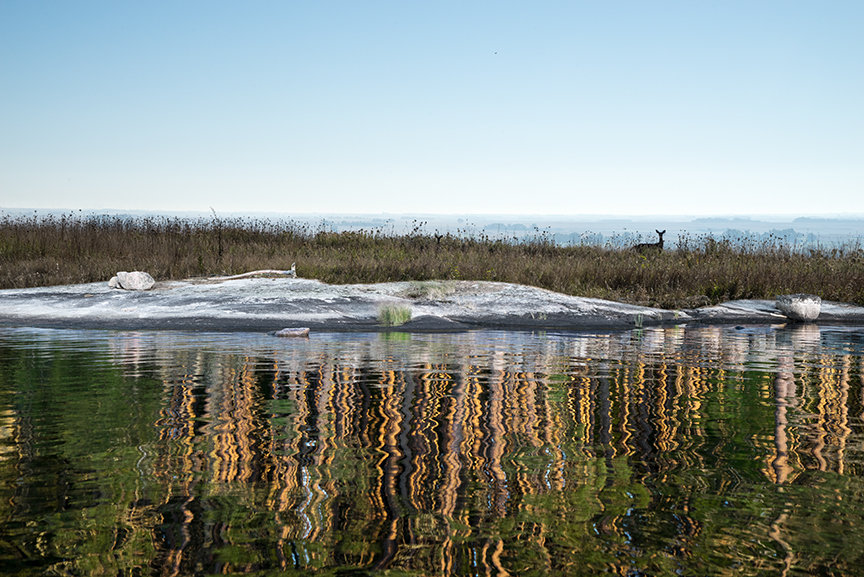
A lot of scientific study has already been dedicated to predicting how the Quetico Superior region’s ecosystem will adapt to global warming. Researchers have conducted extensive experiments and published papers in peer-reviewed journals. They describe a disappearing boreal forest as the prairie slowly creeps north over the next hundred years.
Now, Minnesota photographer and artist David Luke has illustrated what canoe country could look like for future generations, making the the science visible with compelling images.
For the project, Luke photographed both the Boundary Waters and Minnesota prairies. He then seamlessly merged the images so the lake and shore are still there but the background is changed to open grasslands and prairie trees. But the lost forest remains, reflected in the water.
“Invasive” is on display until Feb. 19 at the University of Minnesota’s Architecture and Landscape Architecture Library, 210 Rapson Hall, 89 Church St. S.E. Minneapolis, Minn.
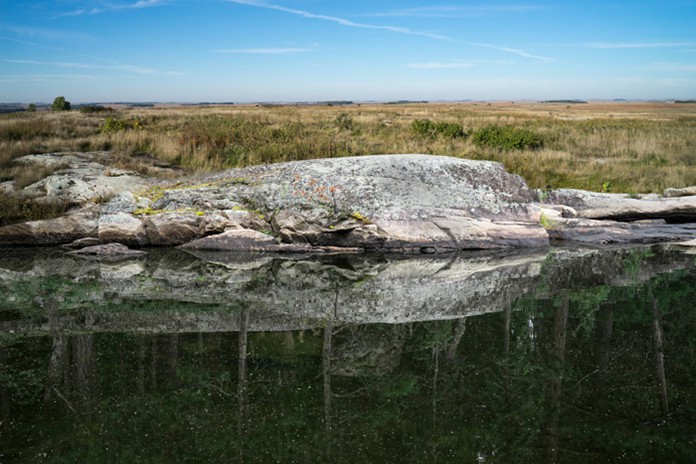
Luke has personal experience with rapid environmental change. As a child, he spent time on the St. Lawrence River in New York. The river’s water were stained with natural material, but then it was infested with non-native zebra mussels, which filtered the natural matter out of the water, leaving it a crystalline blue-green.
It was a presentation by Dr. Lee Frelich of the University of Minnesota about how climate change will affect the Boundary Waters that inspired Luke to look at what will be lost if we do not plan ahead.
As Alissa Johnson reported in Wilderness News last summer, climate change is already having significant impacts on northeastern Minnesota.
“Changes are being seen in temperature, precipitation, and plant species, and changing climate conditions are also placing stressors on animal populations. Over the next several decades, the boreal forest so iconic to the northwoods could significantly change,” she wrote in an article describing the impacts.
Adding some urgency to the issue, Luke has produced a striking set of images, both beautiful and “wrong.”
“Hearing about invasive species and seeing the effect of invasive species are two different things,” he says. “Hearing about the possibility of northern Minnesota transitioning to prairie and seeing it are two different things. Through manipulation Invasive is an effort to visualize and stare down this ecological transition.”
Thanks to David for answering the following questions.
Wilderness News: What more can you tell us about Dr. Frelich’s predictions for the Boundary Waters landscape?
David Luke: The research and article that helped launch this photo project is called “Wilderness Conservation in an Era of Global Warming and Invasive Species: A Case Study from Minnesota’s Boundary Waters Canoe Area Wilderness” by Dr. Lee Frelich and Dr. Peter Reich. I saw Dr. Frelich speak several years ago. This research outlines the consequences and effects of a warmer Minnesota. A transition from boreal forest in the BWCA to oak savanna or grassland savanna is very possible.
WN: How soon will these changes happen, why will climate change make this happen?
DL: Their research looks at this in the vicinity of late 21st century. The southern edge of Minnesota boreal forests are not that far from prairie. My understanding is that if Minnesota becomes warmer and drier, the likelihood of this transition increases. The research includes other possible “impact scenarios” but change in some notable way seems imminent. Biomes are moving to follow their appropriate climate.
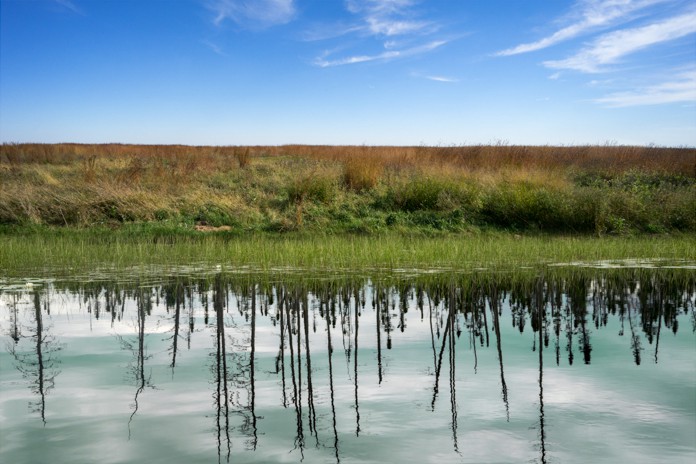
WN: What makes the current Boundary Waters landscape special? What will we lose when it disappears?
DL: I think that many folks that go to the BWCA would answer that question in a way that points to the solitude it provides but also personal histories. I was taken there by my father on a fishing trip when I was a teenager. Somehow it just stuck with me. I actually didn’t go back for quite a while but once I did, I didn’t really stop. I grew up in a motor boating family which was great in the sense that water was often a destination. As soon as I got into smaller boats and started paddling I realized the flexibility and freedom this offered.
The experience in the BWCA landscape is both vast and small. It’s vast due to the size and scope. It’s small because at the end of most days you end up at a campsite. There you can eat, talk to each other, make a fire, look at crayfish moving in for the night, stargaze and that’s about it. The landscape and lakes, while paddling, offer big choices in terms of where you could go and what you could see. The quiet, smaller solitude of your campsite (and hopefully a little back bay that only you can see) is what draws me there. I think a major transition to another type of landscape up there would dramatically change this experience. The openness of prairie is equally as striking but hard to imagine up north. Those woods cover you and provide that solitude.
WN: What do you think viewers’ responses to this exhibition will be?
DL: My intention is that they are engaging and iconic upon first glance but awkward and “wrong” with further inspection.
WN: What do you think about the connections between science, nature, and art?
DL: These three have long worked around and with each other. Personally, I was very struck by the possibility of this ecological transition and I simply wanted to create it in a concrete way. I wanted to see it and face it. I wanted to take this established science and make imagery out of it. I was lucky enough with this project to meet with Dr. Frelich during the process in order to help me envision how I was going to construct these images. That connection was absolutely vital.
WN: You were an artist-in-residence at Pine Needles in 2014, where you worked with science and art. Did that influence this project in any way?
DL: That project (Food and Water) was about landscape but more concerned with looking at a basic connection between two types of landscapes (agriculture and the St. Croix River) that are quite close to each other. I enjoyed that project immensely but if it lacked anything it might be the more pointed concept that Invasive has. If anything, that experience got me to think about a project like this that embraces hard science a bit more.
WN: What was the most challenging aspect of this project?
DL: The editing and collage aspect. I shot over 5,000 images from May to September. During these months I had this feeling that I was never going to have enough imagery to work with for editing/compositing part. Once I dove into trying to combine imagery the shear number of possibilities was overwhelming. At certain moments I just had to forge ahead and call images “done” even though in the back of my head I wondered about a different combination or version.
WN: Any misadventures while working on the project?
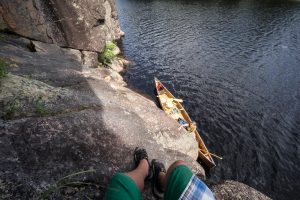
DL: I guess the one story that gets told from this past summer is photographing the pictographs on Hegman Lake. I had been to the ones on Crooked Lake but not on Hegman. My wife, son and I paddled our way there and I took a bunch of photos from the canoe and up against the shoreline. I got it in my head that it would be great to climb up a bit closer to frame this iconic spot a few different ways. To make a somewhat long story short, it’s not horribly difficult getting up closer to them but it’s almost impossible (for me) to climb down. My son was hanging out below me on the flatter rocks and my wife was holding the canoe against shore. After much deliberation, I decided the only way down was jumping. I passed down my camera case to my son while my wife threw a life jacket into the water. It all worked out but not how I had planned it.
WN: Do you think you will do more work like this?
DL: I am not sure. This project might continue to produce imagery for a little bit as there are a few more images I would still like to create. I think I need a moment to take in feedback and then decide what’s next.

